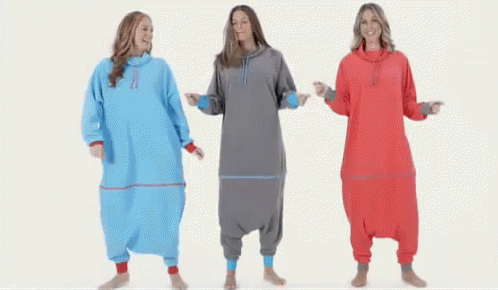The majority of keeping clean consists of eliminating the germs that make a home for themselves in the crevices and fissures of our bodies.
The most crucial aspect of maintaining cleanliness is concentrating on the locations where these pests desire to make their home.
Pay particular attention to parts of your body that tend to be sweaty and heated, such as your armpits and groin.
Everyone craves a hot shower every once in a while. However, there may be a situation where it may be difficult to access flowing water, or it is winter, and you are wondering how to bath without water in winter! In this article, we try to explore this very dilemma.
We will explore some methods to clean yourself when water is scarce.
So, How to Bath Without Water in Winter?
1. Sponge Bath
When taking a sponge bath, rather than filling an entire bathtub with water or using a steady stream of water from a showerhead, you only use a tiny amount of water together with a washcloth or sponge to create a lather and then rinse off.
You may get the same level of cleanliness with nothing more than one or two modest containers, a bit of soap, and a scrubber.

You will learn how to take a bath without water by following the instructions in this guide. It really couldn't be much simpler! If you follow these easy instructions, you can have a clean body in no time (with minimal water requirements)!
Mix 3 tablespoons of baking soda with 700ml of hot water to make the solution for a sponge bath. Stir the solution till all the baking soda is dissolved.
This solution can be used to wash your hair and the whole body. Take some water and put it on your scalp. Use a comb to spread the water properly over the whole scalp.
Take a cloth or a sponge, dip it in the baking soda water and gently rub the whole body. Keep rinsing the cloth in between to wash out any specks of dirt that are gathered in it.
After the bath, you can use a dry cloth to rinse off any backing soda remaining on the scalp or the body.
This mixture uses minimal water and can properly clean any germs or
2. Baby wipes and wet napkins
If you don't have access to any water, you may always rely on wet naps (like the kind you receive at a barbecue establishment) or even baby wipes.
You will feel cleaner and more hygienic after using these, as they are effective cleaning agents.
When we had babies, we saved a lot of money by making our wet wipes from scratch instead of buying them.

With only a little bit of preparation and storage, you can amass a sizeable supply of the necessary items in the event you need them.
To prepare them, you will need a roll of paper towels, a negligible amount of dishwashing liquid (about half of a teaspoon), two to three glasses of water, and some tea tree oil.
The Paper towel roll should be cut in half lengthwise, and one half should be placed in some container. Add the soap and anywhere from five to ten drops of tea tree oil to two cups of water.
This mixture should be poured into the paper towel container and then let to sit for the night. The cardboard tube should be easily removed from the center of the roll the following day by pulling on it while it is still wet.
If it is too dry, you might add some extra water. If you let the roll stand upright, the wipes will come out of the middle of the roll like a box of tissues would.
You may use these to wash your body, and because they include tea tree oil, they are effective against bacteria.
3. Dry Shampoo
Dry shampoo is a category of hair spray that purports to lessen the amount of oil, grease, and filth in your hair. The application of dry shampoo, in contrast to that of wet shampoos and conditioners, takes place while the hair is still dry, hence the name.
Dry shampoo is not necessary to be cleansed from your hair, it is typically applied to the crown of your head as well as other parts of your scalp and hair that are prone to visible accumulations of oil and shine. You can use ordinary shampoo in addition to dry shampoo, but you can also use dry shampoo on its own.
The active chemicals in dry shampoo often consist of alcohols or starches, and their purpose is to remove oils and sweat from the hair.
Taking the oils out of your hair will make it look cleaner. Most dry shampoos feature a fragrance, giving your hair a clean scent even when you're not washing it.
Dry shampoo will make your hair appear less greasy, but the results will vary depending on the texture of your hair.
However, don't be misled by the fact that the name of this product includes the word "shampoo." Dry shampoo isn't designed to clean your hair like regular shampoo.
Using dry shampoo might conceal the presence of grime and grease on the scalp. They are not an effective substitute for cleaning your hair regularly. In point of fact, using dry shampoo excessively might lead to a dry and itchy scalp.
To use it, place the can of dry shampoo approximately 15 centimeters away from the top of your head.
Apply a little bit of it by spraying it directly onto your roots. It is important not to ignore the hair present around the nape of your neck, directly behind your ears, and along the rear of your skull.
Apply the dry shampoo to your tresses and massage it with your fingertips.
As the shampoo dries on your scalp, you can provide your hair with a little added volume and spontaneous bounces by using a blast of cool air from a blow dryer. If you do this, make sure to select the cool setting.
4. Avoid Body Hugging Apparel
You don't want to be sweating too much to avoid the need for a bath. Wearing loose clothes helps better air circulation and lessens the chance of excess sweat buildup.

The stains and smell of clothes happen due to bacteria that feed on sweat and other particles on the surface of the cloth and give rise to foul odor.
5. DryBath
DryBath is a skin cleanser that combines bioflavonoids, natural emollients, and fruit acids to effectively remove dirt and oil from the skin's surface (1). DryBath is a product that enables users to take a bath without using any water or soap.
The grime on the skin can be scrubbed away by using the gel as a scrub. The gel is effective in warding off unpleasant odors as well as discomfort and dryness.
It has a pleasant and light fragrance and eliminates germs while moisturizing the skin. Experts believe it is a miracle cure for those who either do not have access to clean water or use contaminated water.
A Ph.D. student from South Africa named Ludwick Marishane is the brains behind the invention of DryBath. It has a large user base in South Africa and has developed into a product that Cape Town residents use in their homes for everyday use.
Summing Up
Sometimes, we are in a situation where we have little to no water available or perhaps, not in the mood to take a full-fledged bath; a dry bath is an option in such cases. To keep yourself clean, these little tricks can come in handy in such crunch situations.










